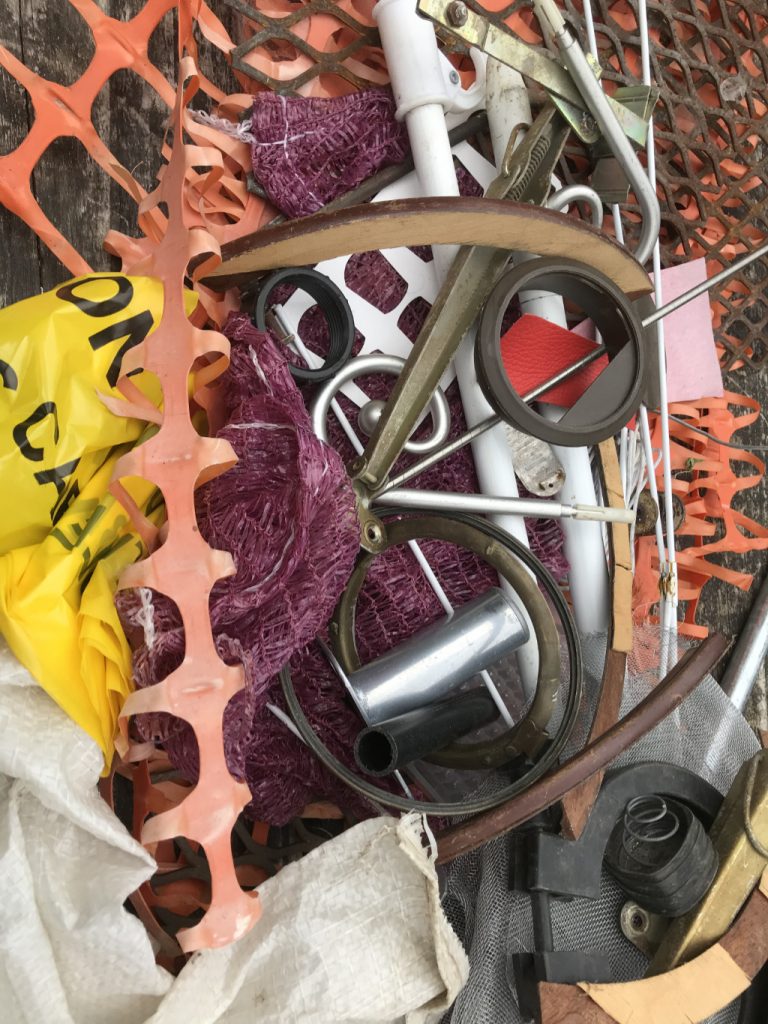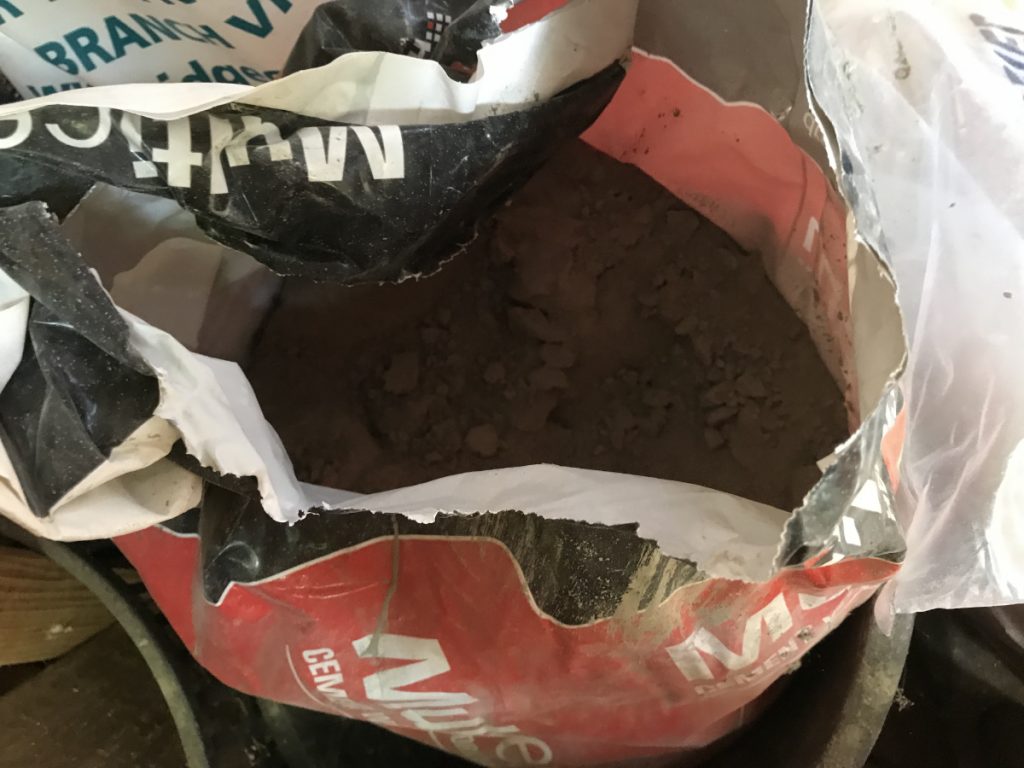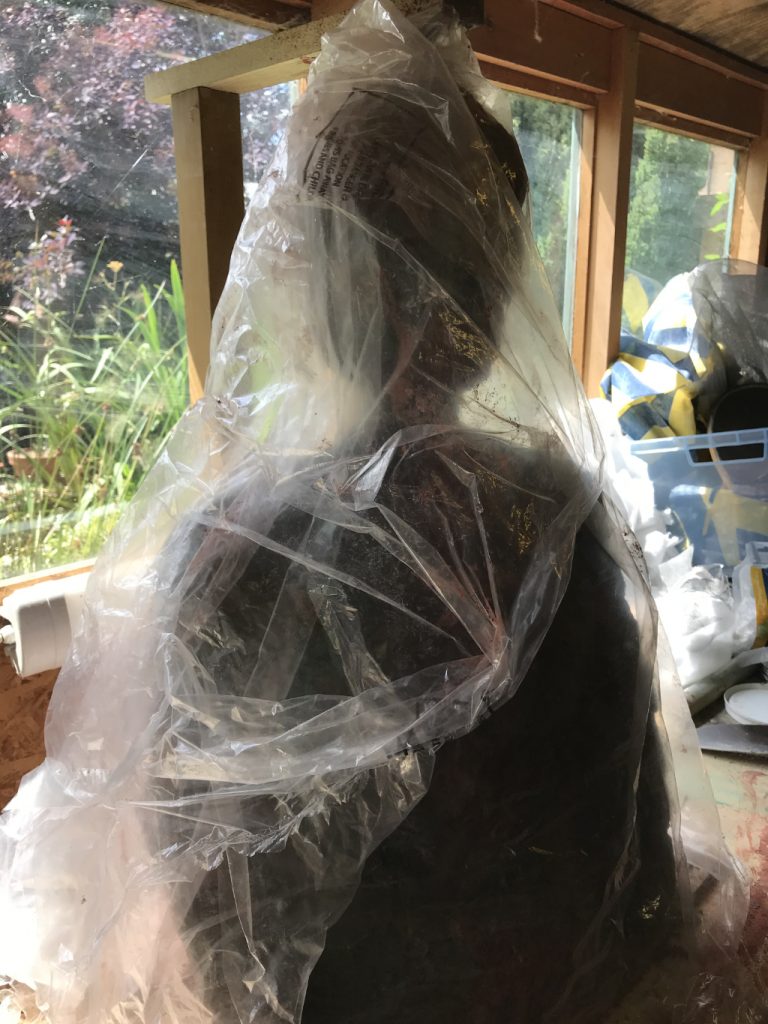Isolation Sculpture – Alchemy
4th November, 2020
Due to Covid, I was unable to collect materials and found objects during my walks. Therefore, I decided to gather up and sort through many of the found objects and materials that I have collected over the past years. Most of which was collected whilst walking and sketching in my local environment or collected during walks around the country during camping trips. Also, a few items are from my household or rescued from skips.

My plan was to use the objects and materials in forthcoming mixed-media artworks and this sculpture – I used the materials to construct the armature for the sculpture.
Alchemy
Early June, I started creating the cement clay to model the sculpture. I experimented with various mixes and found the best is combination of builders sand and Portland cement (both of which I had left over), NHL5 hydraulic lime, pva glue and water. The NHL5 lime is the best for creating a cement that will cope with being outside, if that is where it ends up, it also adds plasticity and helps avoid cracking. Basically, the most important thing is not to add too much water and aim for consistency of putty — it really does feel like clay.

Initially, I have used builders sand in the mix for strength but I will switch to a finer kiln dried sand for the final layers. Kiln dried is it often used by plasterers instead of ‘plastering sand’ because it is drier therefore, less clump forming. I would have rather used marble dust but is just too expensive but hopefully the kiln dried sand will result in a smooth on the surface that contrasts the rougher texture of the inner layers that I plan to excavate and reveal or leave as is. Additionally, the woven mesh and other fibres added to the inner layers for support and additional strength will also provide textures, as will the rusted metal and other objects.
Furthermore, I experimented with cement pigments — red for innermost layers and possibly green for some of the outer skin. I like this combination of contrasting colours, the earthy red is a metaphor for the internal body and organs that Covid 19 often attacks.
With the first layer done I have wrapped it in recycled polythene to slow the drying and fingers crossed it does not crack.

I really struggled to find much regarding modelling with cement or what mixes to use. I did read Lynn Olson’s Modeled Portland Cement Sculpture in which he explains his method: “While either portland or calcium aluminate cement can be used, portland cement is generally more satisfactory for direct-sculpture methods. […]In my first efforts to find a modeling medium I added glass fibers to the neat cement. I later tried mixing a fine grade of steel wool with the neat cement and found that the steel fibers produce a more pliable mass that is capable of taking and holding sculptured details.”
Some of his ideas are still relevant today but he works with small sculptures that do not need much support. He even used asbestos in some of his mixes! Modelling with cement still remains a very experimental technique and most of the mixes I have found so far, in books or online, are for rough casting or for casting small objects.
Olson, L., 1982. Modeled Portland Cement Sculpture. Leonardo, [e-journal] 15 (1), pp.13. [Accessed June 10, 2020].